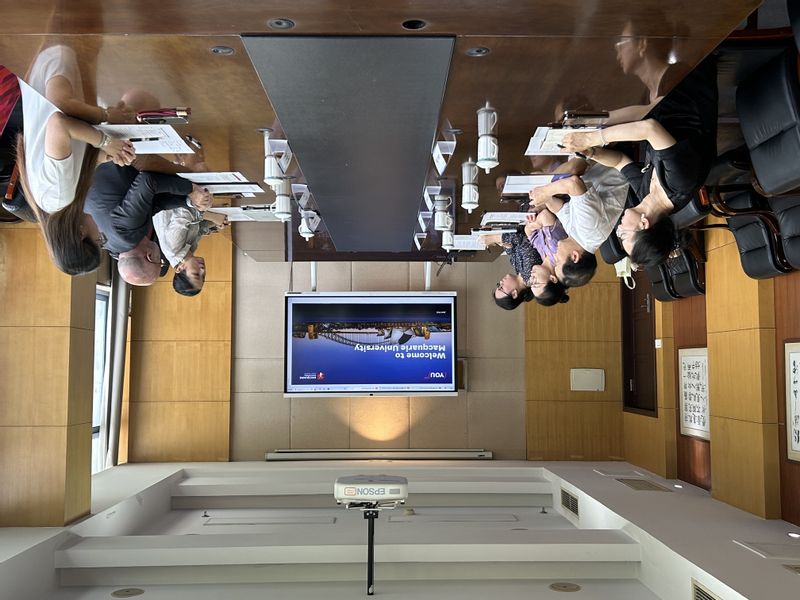On the morning of June 20, Anthony Cahalan, Vice President of Macquarie University, and Wang Tao, Director of the Greater China Region of the Future Student Affairs Department, visited Nanjing University of Posts and Telecommunications.

Meeting of both parties
Liu Qingshan, Vice President, warmly received the delegation from Macquarie University and detailed NJUPT's achievements in cultivating international talents, building an international faculty team, and conducting international scientific research. He stated that as a public research university in the field of information and communication in China, NJUPT has always promoted the internationalization of education from a global perspective, adhered to the educational policy of openness and inclusiveness, and deeply implemented the international development strategy, having established mutually beneficial and win-win cooperative relationships with top global universities and research institutions. NJUPT and Macquarie University are highly compatible in educational philosophy and disciplinary advantages, and it is expected that the two sides will carry out strategic cooperation in areas such as Chinese-foreign cooperative education, teacher-student exchanges, and joint scientific research, jointly building a new paradigm of international cooperation in higher education and contributing wisdom to global scientific and technological innovation and talent cultivation.
Anthony Cahalan appreciated NJUPT's achievements in the field of information and communication. He indicated that as one of the top 1% of universities in Australia, Macquarie University has made breakthroughs in cutting-edge fields such as artificial intelligence and financial technology, and its business, linguistics, humanities and social sciences, engineering and other fields are internationally renowned. Anthony particularly emphasized that the two universities have significant disciplinary innovation advantages in the fields of artificial intelligence and engineering technology, with huge cooperation potential, hoping to further deepen the sharing of educational resources and create a model of Sino-Australian university collaborative innovation.
The two sides conducted in-depth discussions on Chinese-foreign cooperative education, and initially reached a cooperation consensus on key aspects such as the setting of cooperative majors, cooperation models, and quality assurance, laying a foundation for the follow-up strategic cooperation between the two universities.
(Written by: Zhu Zhiya, Shi Jie First review: Zhang Shu Edited by: Wang Cunhong Reviewed by: Zhang Feng)



